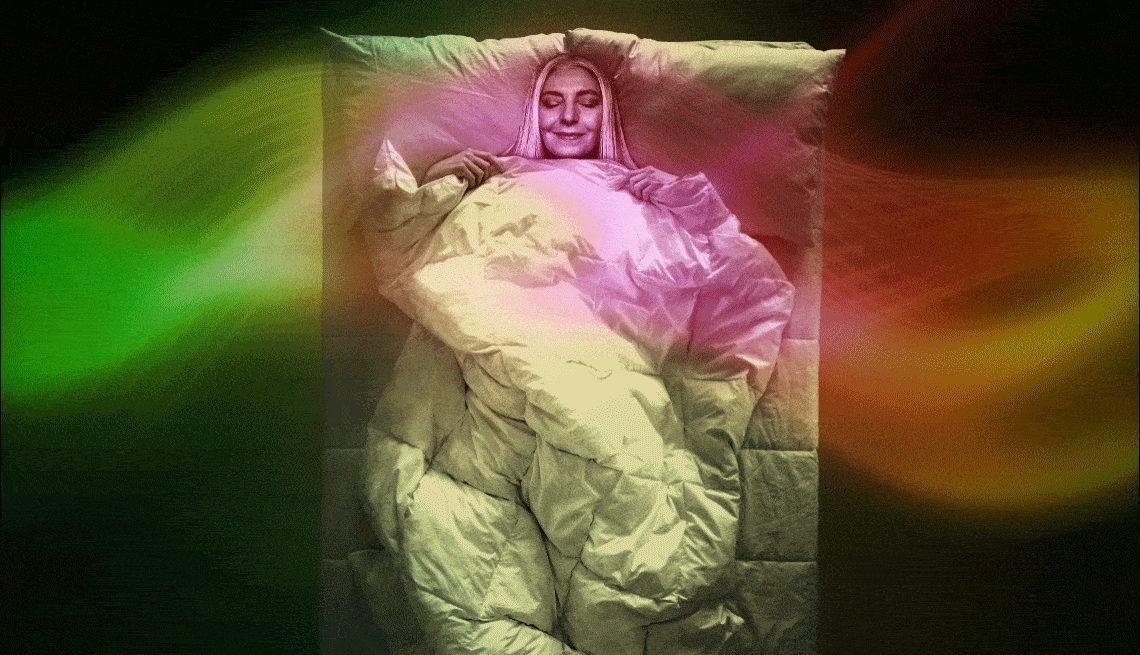AARP Hearing Center


You’ve probably heard about white noise, a static-like sound that some people swear by for catching more z’s, but today there is a rainbow of colored noises growing in popularity. Unpleasant sounds in our environment, from barking dogs to disruptive neighbors to the constant hum of traffic, can leave us exhausted. But what if the right color of noise could turn your bedroom into a restful retreat?
Older Americans are increasingly searching for ways to get better shut-eye. One AARP survey found that nearly half (48 percent) of older adults struggle to get enough sleep.
And in a survey conducted by the Sleep Doctor about which sleep sounds Americans prefer, 40.1 percent of respondents said they prefer green noise, 38.1 percent said white noise, 14.7 percent said pink noise and 13.8 percent said brown noise.
“Soothing sounds help the brain and nervous system by reducing stress and promoting relaxation through the activation of the parasympathetic nervous system,” says Dan Berlau, a professor of pharmaceutical sciences at the Regis University School of Pharmacy in Denver. Additionally, he said, colored noise can mask disruptive environmental sounds and help lift mood and reduce anxiety.
Mathias Basner, M.D., a professor in the department of psychiatry at the University of Pennsylvania School of Medicine in Philadelphia, says that the benefits of sleep noise aren’t just in the relaxing sound that some of us find so calming. He says there may be more to it than that. “It’s a stimulus control in the sense that before you go to bed, you switch the white noise machine on and it’s a sign for your body to rest,” Basner says. “So putting white noise on becomes a ritual that may help you fall asleep.”
True colored noise has no variations; rather it’s a steady tone played at a certain frequency. There are sounds all around us, such as floor fans and ocean waves, that mirror the frequency patterns of each color. So if the idea of listening to colored noise to sleep seems odd, consider that you’ve already listened to approximations of these sounds — and chances are, they’ve helped you relax, even just a little. Here’s a rundown of how different types of colored noise differ and the health benefits they might have to offer, plus what science says about the possible side effects.
White noise
White noise combines all the frequencies of sound we can hear at the same volume, which makes it a great tool for masking intrusive sounds in our environment. Think of it like white light, where all the wavelengths of the color spectrum combine at an equal intensity.
What does white noise sound like?
- Television static
- A whirring fan
- A vacuum cleaner
What are the benefits of white noise?
White noise remains one of the most popular sleep aids. In a survey conducted by the American Academy of Sleep Medicine, 47 percent of U.S. adults said they sleep with a fan on. Research backs this habit. One study published in Frontiers in Neurology found that white noise helped people fall asleep 38 percent faster compared to silence. In an AARP survey of nearly 2,500 Americans age 40-plus, 45 percent of respondents said they believed that a white noise machine could be very or somewhat effective, and 9 percent said they used one. And if you’re trying to put your fussy grandchild to bed, science shows white noise might ease colic.
Research is finding that the benefits of listening to white noise extend beyond sleep — it could help children with attention-deficit/hyperactivity disorder (ADHD) too. This might be explained by stochastic resonance (SR), a phenomenon in which random external noise helps neurotransmitters communicate and, in turn, enhances brain function. For instance, a study published in the Journal of Child Psychology and Psychiatry found that as a result of SR, when children with ADHD listened to continuous white noise, they showed enhanced memory and overall stronger cognitive performance.
Dopamine levels decline with age, so older adults with ADHD may also benefit by pressing play. (For more, see “ADHD in Older Adults: Diagnosis and Treatment.”)
































































More From AARP
6 Simple Strategies for Sleeping Through the Night
Tips for getting the deep sleep you need. Plus, how to get back to sleep if you wake in the wee hours
10 Medications That Can Mess With Your Sleep
Trouble sleeping? These drugs may be to blameWake Up More Refreshed With Our Smart Guide to Sleep
43 tips to help you fight those restless, endless nights and get the slumber you need
Recommended for You